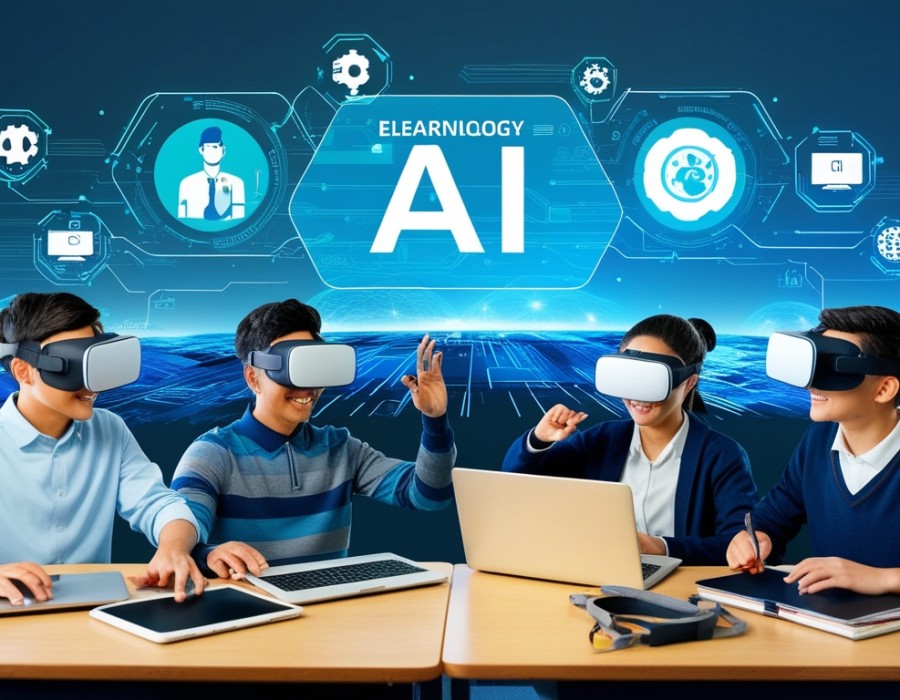The landscape of education has undergone a profound transformation over the last few decades, primarily driven by advancements in technology. Among the most significant innovations is eLearning, which has evolved from simple correspondence courses to dynamic, interactive platforms that redefine how knowledge is imparted. This essay explores the evolution of eLearning, examining its past, present, and projecting its future, while highlighting the roles of eLearning solutions, eLearning services, and eLearning development companies.
The Past: Foundations of eLearning
The roots of eLearning can be traced back to the early 20th century with correspondence courses that allowed students to learn remotely through mail. However, the real turning point came with the advent of the internet in the 1990s. This period saw the emergence of online courses, which provided unprecedented access to educational resources. Early eLearning solutions primarily consisted of static content and basic multimedia elements, offering limited interactivity. Educational institutions began to embrace this new modality, recognizing the potential to reach wider audiences and provide flexible learning opportunities.
The Present: A Multifaceted Approach
Today, eLearning is a multifaceted and dynamic environment that caters to diverse learning styles and needs. With the rise of eLearning services, organizations can now tailor educational experiences to meet specific objectives, whether for corporate training, academic courses, or professional development. The integration of Learning Management Systems (LMS) has facilitated the administration, documentation, and delivery of eLearning programs, streamlining the process for both educators and learners.
In addition, eLearning development companies have emerged as key players in this space, creating innovative content and tools that enhance the learning experience. These companies leverage cutting-edge technologies such as artificial intelligence, adaptive learning, and gamification to create engaging and personalized educational environments. Current eLearning solutions often incorporate interactive elements, real-time assessments, and collaborative tools that foster communication among learners.
The COVID-19 pandemic accelerated the adoption of eLearning, pushing many educational institutions and businesses to transition to online formats almost overnight. This shift revealed the potential of eLearning to provide continuity in education and training, while also highlighting the digital divide that still exists.
The Future: Trends and Innovations
As we look toward the future, the trajectory of eLearning appears promising and full of potential. One significant trend is the increasing use of artificial intelligence in eLearning solutions. AI can analyze learner data to offer personalized content, adaptive assessments, and targeted support, making learning more efficient and effective. This personalization will be critical in addressing diverse learner needs and ensuring engagement.
Another area of growth lies in the integration of Virtual Reality (VR) and Augmented Reality (AR) into eLearning services. These technologies promise to create immersive learning experiences that can simulate real-world environments, enhancing practical training and experiential learning. For instance, medical students can practice surgical techniques in a risk-free virtual environment, while corporate teams can engage in team-building exercises through AR simulations.
Moreover, as remote and hybrid work models continue to gain traction, the demand for robust eLearning services will rise. Companies will increasingly rely on eLearning development companies to create bespoke training solutions that enhance employee skills and foster continuous learning.
Conclusion
The evolution of eLearning from simple correspondence courses to sophisticated, interactive platforms reflects broader changes in society and technology. As eLearning solutions continue to advance, and as eLearning services and development companies innovate, the future of education appears to be increasingly inclusive and engaging. By embracing these developments, we can ensure that learners everywhere have access to high-quality education that meets their needs and prepares them for the challenges of tomorrow. The journey of eLearning is far from over, and its potential is limitless.






Comments